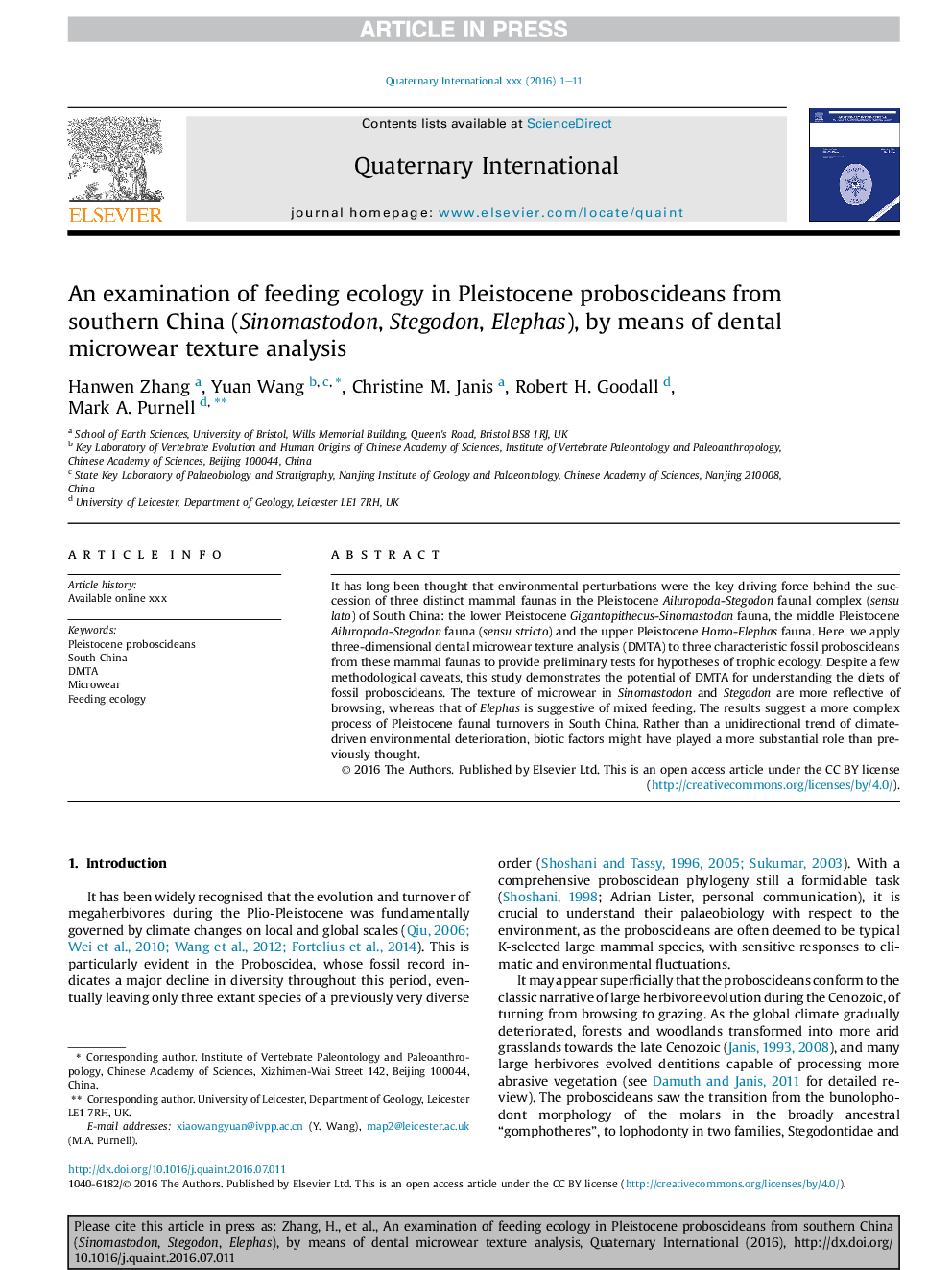| Article ID | Journal | Published Year | Pages | File Type |
|---|---|---|---|---|
| 5113224 | Quaternary International | 2017 | 11 Pages |
Abstract
It has long been thought that environmental perturbations were the key driving force behind the succession of three distinct mammal faunas in the Pleistocene Ailuropoda-Stegodon faunal complex (sensu lato) of South China: the lower Pleistocene Gigantopithecus-Sinomastodon fauna, the middle Pleistocene Ailuropoda-Stegodon fauna (sensu stricto) and the upper Pleistocene Homo-Elephas fauna. Here, we apply three-dimensional dental microwear texture analysis (DMTA) to three characteristic fossil proboscideans from these mammal faunas to provide preliminary tests for hypotheses of trophic ecology. Despite a few methodological caveats, this study demonstrates the potential of DMTA for understanding the diets of fossil proboscideans. The texture of microwear in Sinomastodon and Stegodon are more reflective of browsing, whereas that of Elephas is suggestive of mixed feeding. The results suggest a more complex process of Pleistocene faunal turnovers in South China. Rather than a unidirectional trend of climate-driven environmental deterioration, biotic factors might have played a more substantial role than previously thought.
Related Topics
Physical Sciences and Engineering
Earth and Planetary Sciences
Geology
Authors
Hanwen Zhang, Yuan Wang, Christine M. Janis, Robert H. Goodall, Mark A. Purnell,
